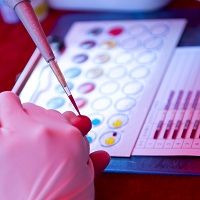Liraglutide Associated with Improved Glycemic Control in Overweight Patients with Prediabetes
In overweight and obese individuals without diabetes, liraglutide 3.0 mg as an adjunct to diet and exercise was associated with greater reductions in fasting and postprandial glucose compared with diet and exercise alone.

At ENDO 2015, David C Lau, MD, PhD, professor in the Departments of Medicine Biochemistry & Molecular Biology at the University of Calgary, presented data from the 56-week SCALE Obesity and Prediabetes trial. This study evaluated the effects of a 3.0 mg dosing regimen of liraglutide on glycemic excursions and hypoglycemia in overweight and obese adults (BMI ≥27 kg/m2 with ≥1 comorbidity, or BMI ≥30 kg/m2) without type 2 diabetes mellitus (T2DM). Liraglutide is a glucagonâ€like peptideâ€1 analog approved for treatment of T2DM at doses up to 1.8 mg.
Liraglutide injection was approved in December 2014 by the FDA for as an adjunct to a reduced-calorie diet and increased physical activity for chronic weight management in obese (BMI 30 or greater) and overweight (BMI 27 or greater) adults who have at least one weight-related comorbidity such as hypertension, type 2 diabetes, or dyslipidemia.
Subjects (78.5% female; 61.2% with prediabetes) were randomized 2:1 to receive either once-daily liraglutide 3.0 mg (n=2487) or placebo (n=1244), as an adjunct to a 500 kcal/day deficit diet and increased physical activity (≥150 minutes/week).
Changes in fasting (FPG) and postprandial plasma glucose (PPG), determined during an oral glucose tolerance test (OGTT), were assessed at baseline and at week 56. Hypoglycemic events were reported as adverse events (AEs), by individuals either based on their symptoms (spontaneous, not biochemically confirmed) between visits or by investigators based on glucose values ≤70 mg/dL during visits (including OGTT) irrespective of symptoms. Symptoms included paleness, shaking, sweating, increased pulse/heartbeat, hunger, vision disorder, and unusual behavior or drowsiness.
Lau reported that between baseline to 56 weeks, greater reductions (p<0.0001) were seen with liraglutide compared to placebo in body weight (-8.0% vs. -2.6%), FPG (-7.1 mg/dL vs. 0.1 mg/dL) and PPG (-46.8 mg/dL vs. -0.4 mg/dL). Improvements in glycemia were more pronounced in individuals with prediabetes than those without.
Hypoglycemia AEs were rare and none required professional intervention. Similar proportions of individuals on liraglutide (1.3%) and placebo (1.0%) reported hypoglycemia based on symptoms between visits. More individuals treated with liraglutide vs. placebo had biochemically-defined hypoglycemia AEs during FPG visits (3.6% vs 0.8%) or OGTT (8.3% vs 1.4%), consistent with the effects of liraglutide on FPG and PPG.
Regarding biochemical events reported during FPG and OGTT visits, respectively, Lau said that 31.3% and 41.5% of subjects taking liraglutide vs. 30.0% and 33.0% on placebo were asymptomatic. Only a small proportion of the events reported at FPG visits (0.1% vs 0%) and OGTT visits (2.3% vs 0%) for liraglutide and placebo, respectively, were associated with plasma glucose (PG) levels <56 mg/dL. This is considered to be a more clinically relevant threshold for hypoglycemia in individuals without T2DM. The difference in values between liraglutide and placebo administration was to be expected due to the mechanism of action of the drug. Overall, hypoglycemia AEs were less common in those patients with prediabetes than without (liraglutide: 9.4% vs 15.9%; placebo 2.6% vs 4.3%, respectively), consistent with higher mean baseline FPG and PPG values.
Lau concluded by stating that, in overweight and obese individuals without diabetes, liraglutide 3.0 mg as an adjunct to diet and exercise was associated with greater reductions in fasting and postprandial glucose compared with diet and exercise alone. Clinically significant hypoglycemia, defined as glucose <56 mg/dL, was rare with both liraglutide treatment and placebo administration.
There was a question about cardiovascular (CV) events and mortality. Professor Lau referred to the LEADER phase 3 trial which is monitoring CV events in T2D patients undergoing long-term liraglutide therapy (up to 60 months) on the approved maximum daily dose of 1.8 mg.
A questioner from the floor asked about the response to the mixed-meal tolerance test. Lau replied that 50-60% of subjects were asymptomatic during this test.
Another questioner asked if there was more nausea in the liraglutide-treated patients. Lau said that there was no overall difference between the two groups except possibly early on in the course of treatment.